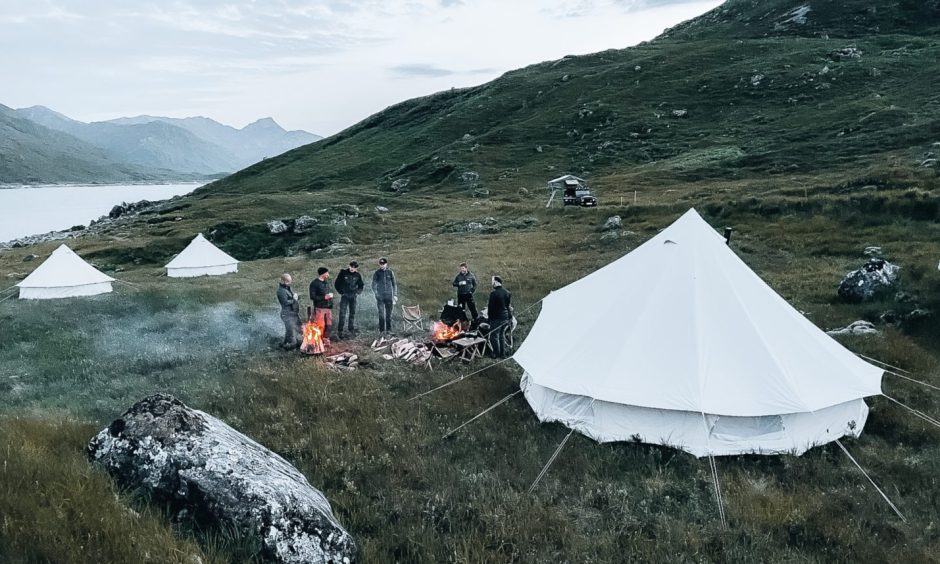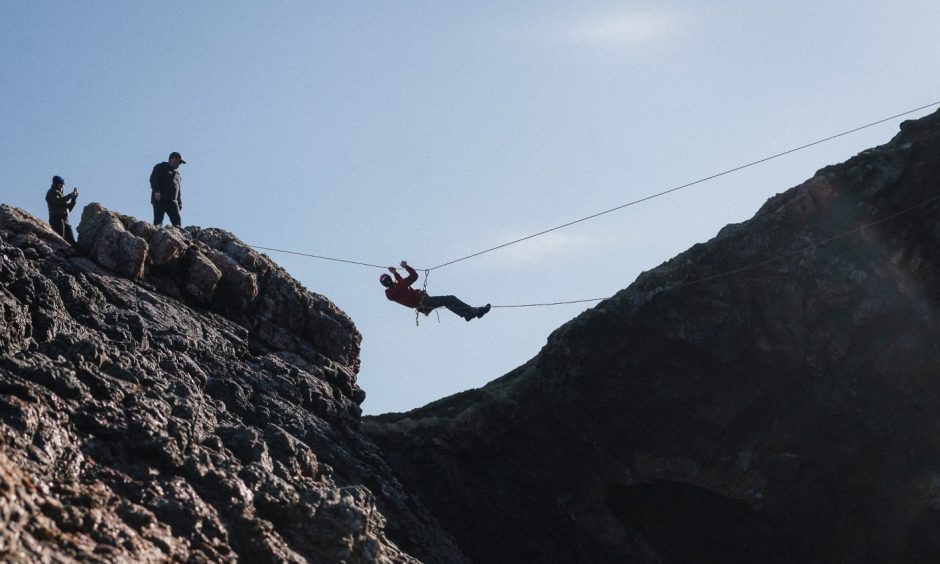The proposal came with a rather daunting invitation: “Marry me, and come to live in Beirut.”
Adam Kelliher was a war correspondent in Lebanon covering the release of Western hostages in the early 1990s.
Five months after meeting his future wife Cathra, they were living in a city amidst a civil war, and within days were nearly kidnapped.
From war to Smurfs and business ventures
Three years of travelling together culminated with Adam being shot while working as a cameraman in Croatia during the Balkan war.
Eventually, it was the Smurfs, as well as warlords, that led to a change of career.
It was the start of a road that saw them set up and sell their own company and buy the island of Taransay.
Their journey to the Castaway island, and their plans for regeneration and adventure tourism there, will be outlined at the Scottish Tourism Alliance’s signature conference at P&J Live on March 12 and 13.
The idyllic surroundings of Taransay are far removed from the hectic lifestyle the couple lived initially.
The Kellihers had been in Beirut for just 10 days when they were the targets of an attempted kidnapping.
They were followed by heavily-armed men while trying to buy a car, but managed to escape when they realised they were in danger.
Cathra believes her presence helped thwart the kidnapping: “Back then they didn’t kidnap women.
“What we think happened is that they hadn’t counted on me being there and were completely fazed when I appeared.
Dramatic escape and a fatal shooting
“It was also why it was me who went back across the Green Line, from East to West Beirut, alone to get our passports, because Adam, not me, was the kidnapping target.
“The general view was that it happened because Libya had just been accused of the Lockerbie bombing and word had gone out to grab westerners in retaliation.”
Told by the Foreign Office to leave, they had to arrange a taxi from Syria which crashed through a succession of roadblocks to get them to safety.
“I had $500 on me and gave it to the driver”, said Adam. “It was money well spent as he saved our lives.”
In 1995, Adam was covering the war in Croatia for the BBC when the armoured car he was driving was ambushed and “hosed down with weapons’ fire”.
He was shot in the arm but his colleague John Schofield died in the attack.
He decided then, after 14 years covering 29 wars, he needed a change of career.
“I reflected that, statistically, it’s going to catch up with you. I thought ‘If you don’t learn from this you’re a mug’.
He began covering international conferences and other stories, but one in particular led to a change of career.
Cathra says: “One day Adam arrived home from a story about a man who spent his life collecting blue Smurf dolls.
“He took off his camera kit and just said ‘I’m done’.”
Family connection led to Taransay purchase
The couple moved into business, setting up a regional office for a nutritional supplement business in Jordan.
They then started their own company, Equazen, which was sold in 2007 to Swiss healthcare company Galenica.
They went into pharmaceutical manufacturing in Lewis where they converted a moth-balled research plant into the company Equateq, which was sold in 2014 to German multi-national BASF.
The connection to the Outer Hebrides stems from Cathra’s father, David Horrobin, buying Borve Lodge in Harris, which looks over to Taransay, in 1985.
Adam began visiting Borve when he and Cathra were engaged in 1991.
The couple later bought the estate after Dr Horrobin’s death in 2003 and in 2011 purchased Taransay from a local crofting family.
Since then they have been carrying out environmental, historical and social projects on the uninhabited island.
Last year they sought fresh investment, incorporating their three priorities for tourism and landowning in Scotland – environment, sustainability and community.
They are now working with Rvival, a company specialising in no-trace adventure experiences taking high-spending tourists on immersive breaks in the wild.
They have also partnered with nature restoration organisation Restore, and RePlanet, which helps conserve landscapes by generating carbon and biodiversity credits to sell to private investors.
‘A beacon of biodiversity uplift’
Cathra said: “We feel everything we’ve done so far leads into what we’re trying to achieve on Taransay.
“That is in terms of the energy, the drive and the instinct for something we believe in that hasn’t been done before in quite the same way.
“We hope to marry up finances available for environmental projects, from corporates, investment houses etc, either wanting to capitalise on the brave new world of biodiversity credits or to improve the environment for philanthropic or PR purposes, with the actual work that needs to be done, without having to sell the land.
“We want to make Taransay a beacon of biodiversity uplift, while bringing in a business on the tourism side of things.
“And in the same spirit of heading to Beirut aged 23, or starting our first company when the accountant told us the numbers don’t add up, we are not phased by it.”
Adam added: “It would have been the easiest thing in the world to put up A-frames and plastic pods along the hill line of the island and flooded it with people with all the attendant results on pollution and disruption of wildlife.
“But to do it in a more considered and thoughtful way, in alignment with ecological regeneration projects, we can achieve something quite remarkable.”





Conversation